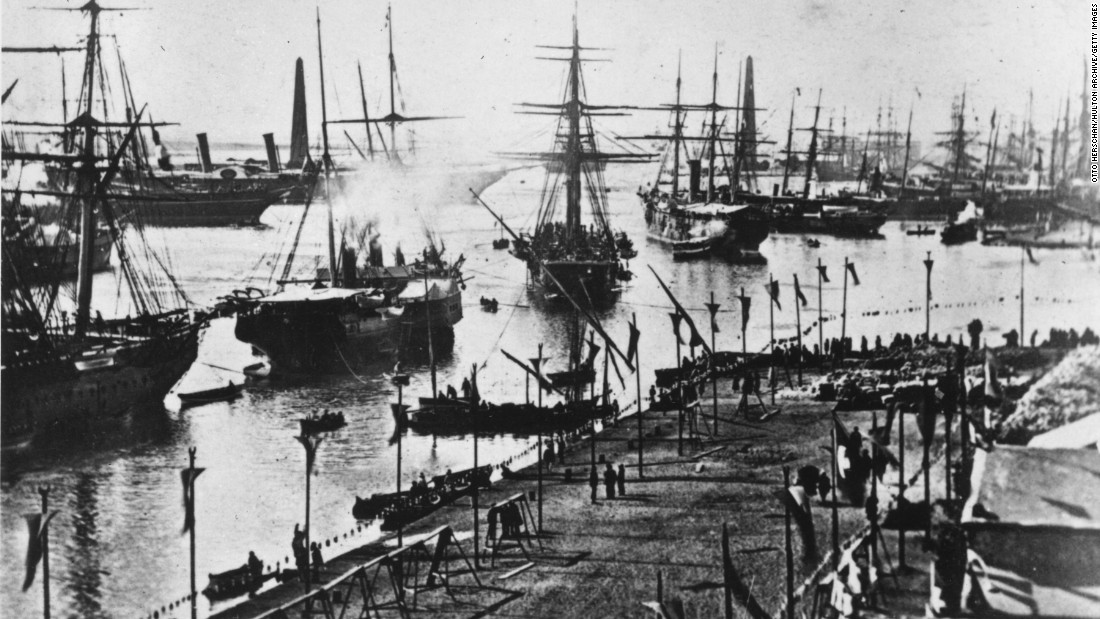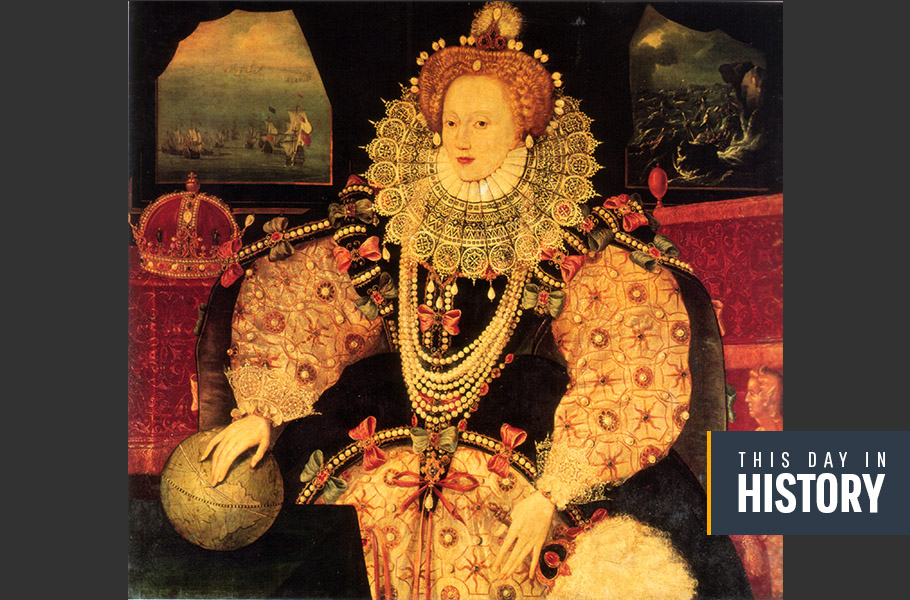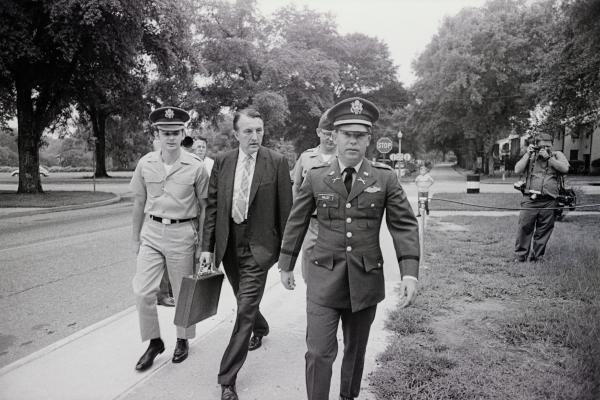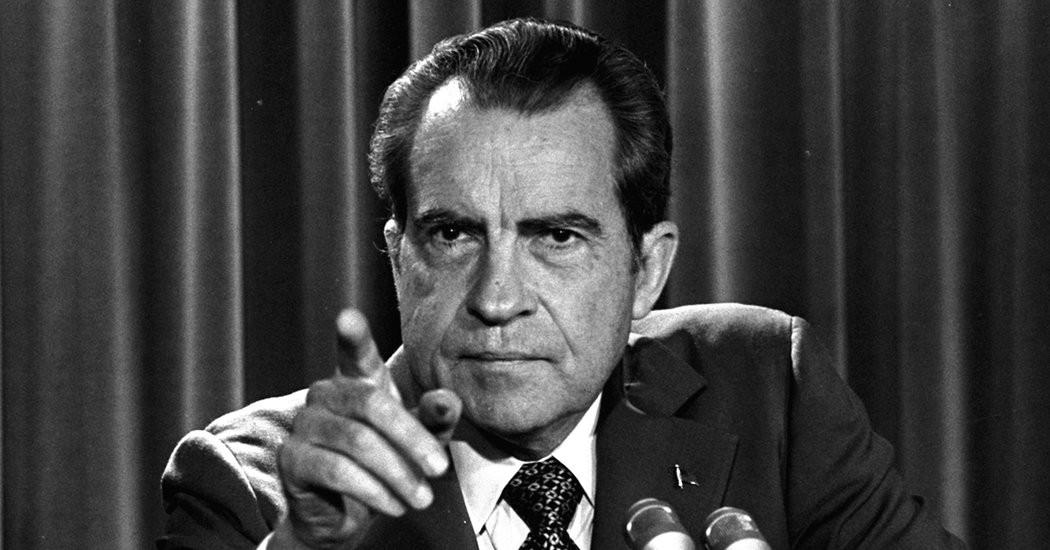Suez Canal opens
The Suez Canal connecting the Mediterranean and the Red seas is inaugurated in an elaborate ceremony attended by French Empress Eugnie wife of Napoleon III.In 1854 Ferdinand de Lesseps the former French consul to Cairo secured an agreement with the Ottoman governor of Egypt to build a canal 100 miles across the Isthmus of Suez.An international team of engineers drew up a construction plan and in 1856 the Suez Canal Company was formed and granted the right to operate the canal for 99 years after completion of the work.Construction began in April 1859 and at first digging was done by hand with picks and shovels wielded by forced laborers.Later European workers with dredgers and steam shovels arrived.
Labor disputes and a cholera epidemic slowed construction and the Suez Canal was not completed until 1869four years behind schedule.On November 17 1869 the Suez Canal was opened to navigation.Ferdinand de Lesseps would later attempt unsuccessfully to build a canal across the Isthmus of Panama.When it opened the Suez Canal was only 25 feet deep 72 feet wide at the bottom and 200 to 300 feet wide at the surface.
Consequently fewer than 500 ships navigated it in its first full year of operation.Major improvements began in 1876 however and the canal soon grew into the one of the worlds most heavily traveled shipping lanes.In 1875 Great Britain became the largest shareholder in the Suez Canal Company when it bought up the stock of the new Ottoman governor of Egypt.
Seven years later in 1882 Britain invaded Egypt beginning a long occupation of the country.The Anglo-Egyptian treaty of 1936 made Egypt virtually independent but Britain reserved rights for the protection of the canal.After World War II Egypt pressed for evacuation of British troops from the Suez Canal Zone and in July 1956 Egyptian President Gamal Abdel Nasser nationalized the canal hoping to charge tolls that would pay for construction of a massive dam on the Nile River.In response Israel invaded in late October and British and French troops landed in early November occupying the canal zone.
Under pressure from the United Nations Britain and France withdrew in December and Israeli forces departed in March 1957.That month Egypt took control of the canal and reopened it to commercial shipping.Ten years later Egypt shut down the canal again following the Six Day War and Israels occupation of the Sinai Peninsula.For the next eight years the Suez Canal which separates the Sinai from the rest of Egypt existed as the front line between the Egyptian and Israeli armies.
In 1975 Egyptian President Anwar el-Sadat reopened the Suez Canal as a gesture of peace after talks with Israel.Today an average of 50 ships navigate the canal daily carrying more than 300 million tons of goods a year.






